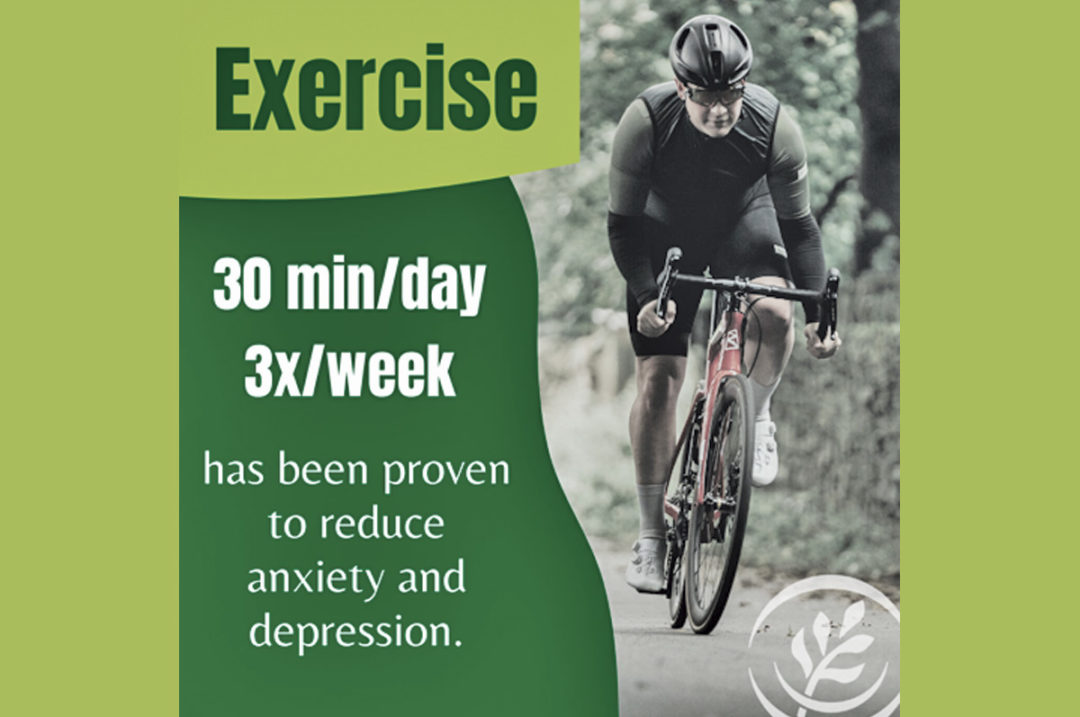How often does mobility play a factor in your herd? We know that sick heifers move less, cows in heat walk more, and poor feet and legs are a problem. We do everything we can to increase cow comfort while decreasing their stress.
But what about your own mobility and stress? Are you prone to sit down when you are exhausted or do you look for ways to add exercise to your day? Do you consider your own long-term health as much as that of your cows?
It is not selfish to prioritize exercise – it is smart business. It enhances creativity, increases the happy hormones and helps you deal with stress more effectively. In spite of four knee surgeries, spinning and kickboxing classes are standing appointments on my calendar. That’s the only way I fit fitness into my schedule, and if I don’t, I’m crabby and can’t move very well. Besides, I like to eat ice cream!
Whether you work an off-the-farm job, ride in the truck, are milking or sit in a classroom, it is important for both our physical and mental health that we move more. Americans face an obesity epidemic – including an increasing number of farmers and ranchers – which calls for prioritizing fitness in agriculture.
Why?
Scientifically speaking, exercise increases endorphins and other natural brain chemicals. According to the Mayo Clinic: “Exercise helps prevent and improve a number of health problems, including high blood pressure, diabetes and arthritis. Research on depression, anxiety and exercise shows that the psychological and physical benefits of exercise can also help improve mood and reduce anxiety.”
Dairy nutritionist Laurie Winkelman puts it simply: “It’s good for the mental health.” She should know since she has run 45 marathons and is now competing on a national level in fitness racing, which is a blend of running and functional fitness.
“You can’t take care of other people, your land or animals if you don’t take care of yourself. Fitness is a similar mindset to running a successful business,” she says.
Winkelman acknowledges it is hard to find time, but fitness is critical to getting a mental break from the stress of agriculture.
“It makes me feel good about myself,” Winkelman says. “I can control how I work out, what I eat and when I work out. I can’t control my job, farming, showing cattle or the weather. It’s a great stress relief, and I really enjoy the community outside of agriculture.”
An increase in confidence and empowerment are the benefits that Emily Shaw, a certified fitness trainer and founder of Dairy Girl Fitness, sees in her clients.
“Exercise and taking care of your health is hard,” Shaw says. “The women I work with feel empowered in their own bodies and capabilities as they start to work out. They find an increase in their self-worth and realize ‘I deserve to do something for me.’”
How?
“Strength training is a great place to start to set a strong foundation,” says Shaw, who loves to show dairy cattle and has a degree in kinesiology.
She has found that not enough women are doing as much strength training as they need. Contrary to what many women think, strength training leads to the toned look many women are looking for – and more importantly, it helps with endurance, work on the farm, lifting kids, etc.
“Everyone has to find their own schedule, which will determine the type of workouts, but I recommend to hit more muscle groups for more time,” Shaw says.
There are many ways to intentionally include exercise into your day, from gym time to walking to early morning or evening classes to breaking a sweat on your own farm. Amanda Nigg (@FarmFitMama) from South Dakota, suggests looking at exercise as a task and not an optional one.
“Block it off on your calendar, and get your running shoes out the night before,” Nigg says. “Be intentional.”
You know those old tractor tires out back? Or the chains that are so handy in the spring mud? The buckets of feed in the barn? The stack of cinder blocks? All of these items can be called upon to help get you in shape, according to Nigg, who has built a business training the people of agriculture.
Her mental wellness was at an all-time low in March 2020, as a result of their home burning to the ground and losing access to her gym due to the pandemic. Seeing her despair, her husband brought her farm items she could work out with. Nigg fell in love with creating on-farm workouts and now encourages her clients to creatively find items in their own operations.
“One Canadian client used buckets of oats, added water to adjust weight and weighed them on a cattle scale,” she says. “Fitness helps manage stress and rediscover who you are after taking care of everyone else.”
Nigg has advice for those who want to get started.
“Keep it simple: don't overcomplicate it and overwhelm yourself,” she says. “Start small, like improving your water intake each day. Begin by walking daily.”
When?
All of Nigg’s workouts are 15-20 minutes long, and she works to help clients learn the intrinsic relationship between mental and physical health. She's had people from all walks participate in the program, including her oldest client – a 79-year-old grandma with abs.
“Many people feel selfish when they take that time for themselves,” Nigg adds. But exercise helps you to be a better parent, better farm operator and increases confidence in what you bring to the table. She also points to nutrition as a key contributor in well-being (click here for nutrition tips to improve mental wellness).
Integrating fitness into farm chores helps Missouri rancher and pharmacist Jason Medows. He rides a bike to check cows and hauls feed bags instead of relying on equipment. He shared more tips for how to incorporate exercise and about the effects of exercising on his mental health journey in Agriculture’s Growth Journal.
Keep in mind there is no singular right way to fit exercise in. I have a rule against working out prior to 8 a.m., though I’ll gladly work in the barn early in the morning. Maryland farmer Paula Linthicum goes to circuit training at 6 a.m. to start her day, while Wisconsin animal health representative Eliza Ruzic plays basketball with her kids and goes for a run when she’s mad. Find what works for you and stick to it.
Shaw encourages people to view exercise as a way to take care of themselves – something to benefit them and their long-term health, both mentally and physically. For example, she suggests telling yourself, "I’m doing this so I can be as strong and healthy as possible for my family."
“There’s nothing wrong with having a body goal, but it’s much more than that,” she adds. “Focus on consistency over perfection. Not only in exercise, but in health. You’ll see more progress in doing good the majority of the time.”
Exercise isn’t easy. You won’t always feel like doing it. There are days it takes a solid 45 minutes of sweat and pain before I feel any benefit, but I try to remember that it is helping me in the long run – physically and mentally – if I keep after it consistently. Kind of like farming; the rewards aren’t always immediate, but the more you work out, the more results you’ll see.







